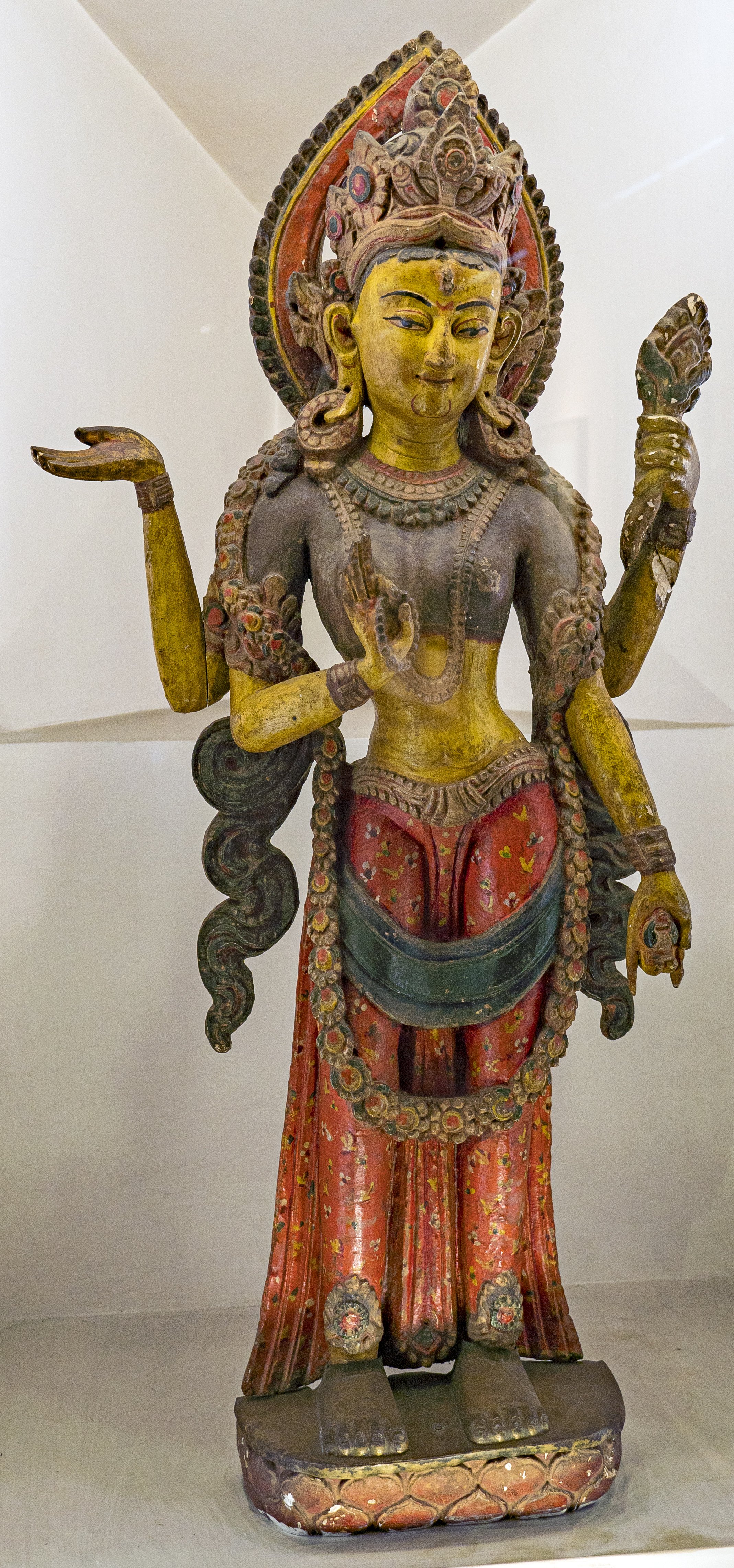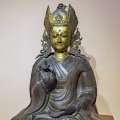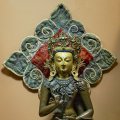Patan Museum (Nepal): photo 129
Photo 129 of 212 in Gallery: Patan Museum (Nepal)

Image title: The Goddess Bhrikuti
Description of the photo
This Wooden sculpture shows an image of the Goddess Bhrikuti, from the 17th/18th century origination from Nepal.—Materials used: Wood, gesso, polychrome paint, gilt.
Bhrikuti (“The Frowner”) is a goddess of compassion also known as the Yellow Tara. Considered a Bodhisattva, she belongs to the cosmic Buddha family presided over by the Buddha Amitabha. She has several forms, most common of which is this four-armed version. Here she is attractively dressed in a short blouse, patterned skirt and billowing scarf, and is crowned, garlanded, and ornamented. She displays three attributes: a rosary, a tripartite emblem (tridanda), and a small water vessel. She extends the fourth hand in a gesture of homage.
Legend affirms that Bhrikuti was the name of the Nepalese bride of the seventh-century Tibetan king, Srong-tsen-gam-po. Along with a Chinese bride she is often credited with introducing Buddhism to Tibet. In their dowries both brides apparently did bring precious Buddhist images some of which are believed to be still enshrined in Lhasa.
Gallery information:
The Patan Museum is located on the Durbar square of Patan (Lalitpur/Lalitapura, Kathmandu, Nepal) which is associated Keshav Narayan Chowk (Keshavnarayan)—a form of Lord Vishnu. Being listed as a World Heritage Site, the whole of Durbar square is filled with exquisite temples, sculptures and other ancient structures, of which the ancient history history can be traced to the Malla Kings of Lalitpur. It is an important site for both Buddhism and Hinduism.
Photo details:
Date: 2019-12-02
Camera: SONY ILCE-6400
Exposure: 1/30
Aperture: f/4.5
ISO: 100
Focal length: 24mm
High resolution:
Download file
Size: 5.36 MB
Resolution: 2136 x 4560
© Photograph by Gabe Hiemstra.
License: CC BY-NC-ND 4.0

